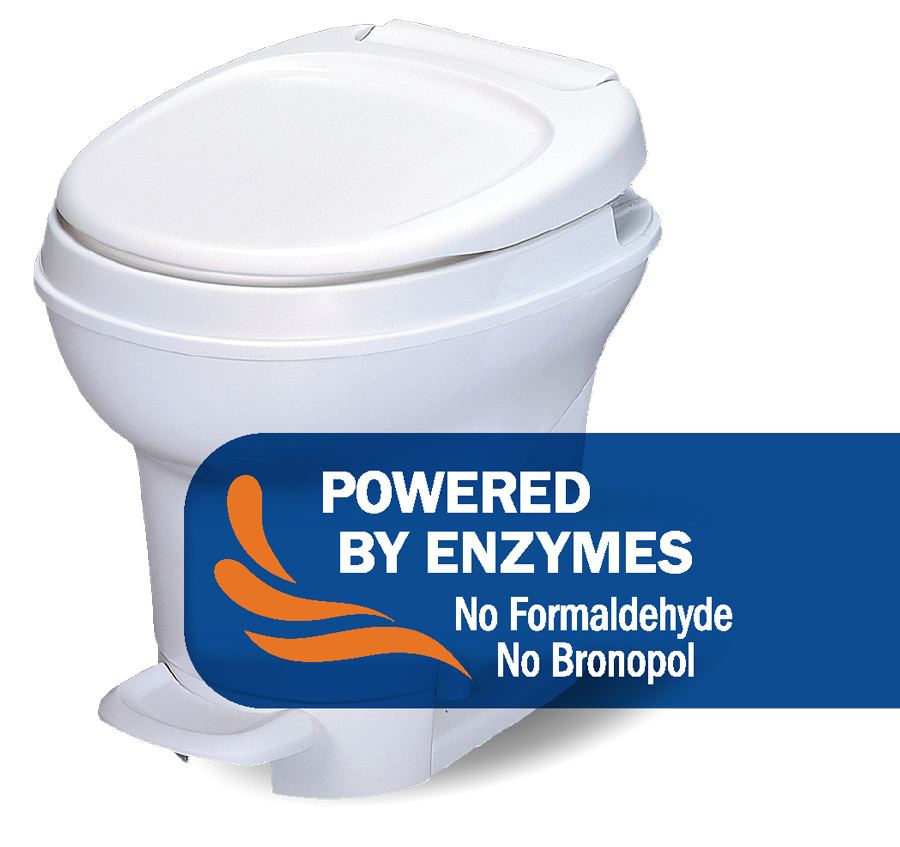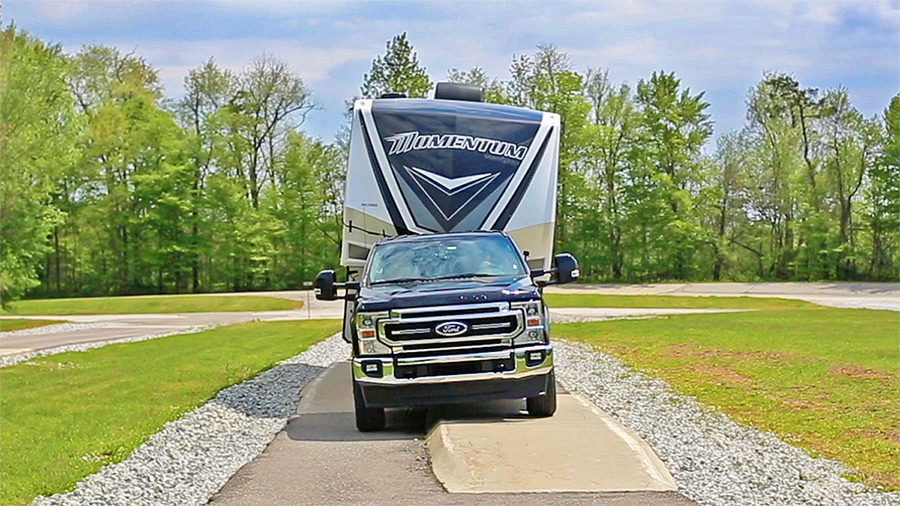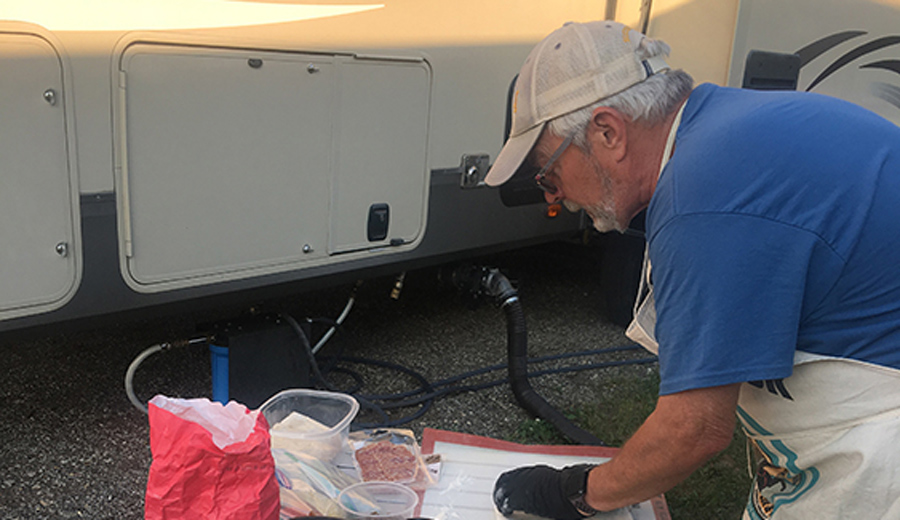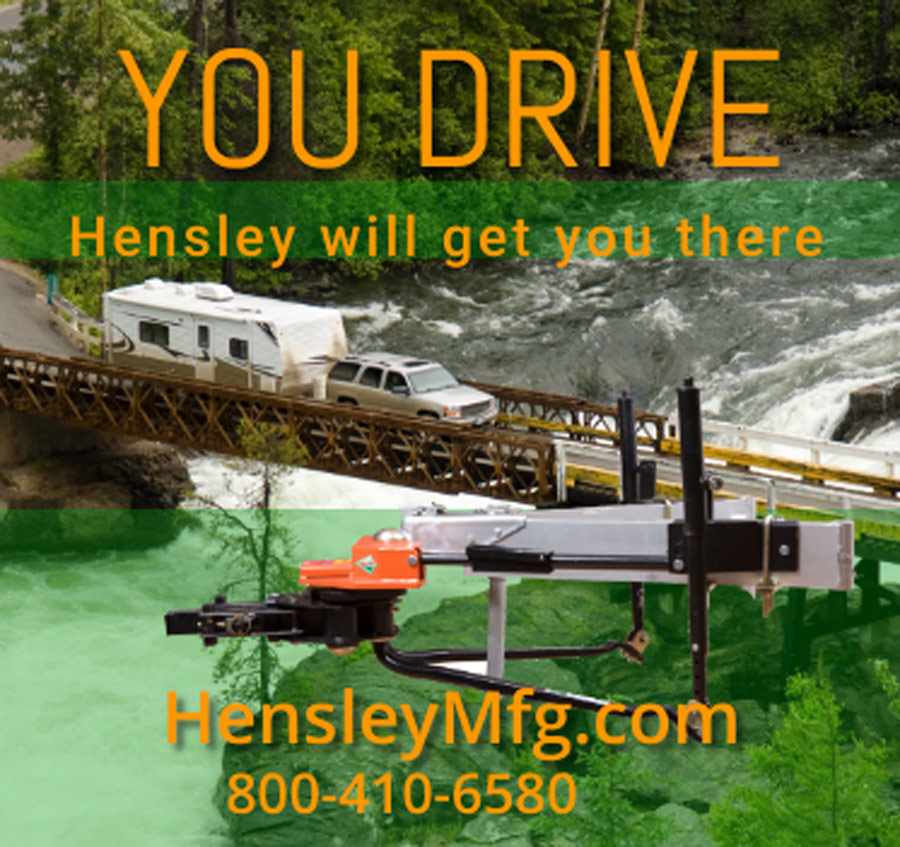Subscriber Access Only
Special Offer
Get 1 year of RV Enthusiast Magazine for just $9.99
Unlock My Offer No ThanksAlready a subscriber? Click here to access full issues.






Social Distancing Machine!






Make it a Lance. We are social distancing pros with 55+ years of experience building RVs. Unmatched quality achieved through composite construction and lightweight design with off the grid features keeping you powered up and connected with family and friends.
Our dealer partners are open and ready to serve you in a safe environment! LIVE.LANCE.LIFE.

Travelers frustrated with RV park signals and throttled-back cell data service can look to Nomad Internet for truly unlimited 4G LTE connections.
Part one of our look at RV generators includes a discussion of inverters vs. conventional generators, running smaller units with a parallel cable, and more.
With a little maintenance and proper operation, you can keep your slideout working smoothly and quietly over the long term.
Roadmaster’s Comfort Ride Slipper Spring suspension system can help make your trailer towing experience smoother and safer.
Replacing the bulb seal around slideouts will keep moisture and debris out of the interior — and the job is easier than you think.
How to connect to the RV’s LP-gas supply to fuel your grill, firepit or other device — and say goodbye to disposable propane cannisters.
Installing Lippert’s self-adjusting electric brake kit provides trailers with consistent stopping power — with less maintenance.
Testing SuperSprings International’s Trailer SumoSprings suspension system at the Navistar Proving Grounds in Carlisle, Indiana.
Trifold sofas aren’t designed for regular duty as sleepers. This simple, inexpensive fix could be the cure if yours suffers from a sagging mattress.
Traveling oftentimes creates service interruptions. weBoost’s redesigned Destination RV cellular booster brings more power, 5G to parked RVs.
(800) 830-9729 ext. 3
[email protected]
EDITOR – Bruce Hampson
(574) 584-4616
[email protected]
TECHNICAL DIRECTOR
Chris Dougherty
(800) 830-9729 ext. 5
[email protected]
TECHNICAL EDITOR – Chris Hemer
(800) 830-9729 ext. 6
[email protected]
SOCIAL MEDIA DIRECTOR – Jim Mac
(800) 830-9729 ext. 7
[email protected]
ART DIRECTOR – MIKE ACCUARDI
[email protected]
120 Atwater Road, Springfield, MA 01107
RV Enthusiast is published monthly by RVE Media Group Inc., 3425 East Golden Valley Road, Reno, NV 89506. RV Enthusiast magazine is copyrighted in the United States, Canada, Great Britain and other countries. All rights reserved. Permission to reprint or quote excerpts considered on an individual basis and granted only by written request. Advertising rates and Editorial calendars provided upon request.

f there was a silver lining to the Great Recession of 2007-’09, it was that RV manufacturers had a lot of time on their hands. The national economy was in the toilet — and no industries were hurt more than those building recreational vehicles (we’ll include pleasure boats here, as well). According to the RV Industry Association, shipments to dealers dropped from 353,400 in 2007 to just 165,700 two years later. And actual retail sales were worse.
Obviously, something had to be done. So, the industry essentially reinvented itself. A case could probably be made that, prior to the recession, the industry was building units it wanted to build. By the time the recession ended, manufacturers had, to a large degree, begun designing and building RVs in the sizes, weights and floorplans that those consumers willing to make a purchase wanted — and, more importantly, they had recommitted to building quality units. For years, it had been accepted that Baby Boomers — then the largest demographic fueling the outdoor hospitality arena — were a hands-on group capable of making repairs on the road should something go awry. That wasn’t being said of the incoming wave of Millennial buyers more used to electronics that simply worked when you plugged them in.

Those are the prizes in Winnebago’s new #SupportYourParks campaign — a continuation of last year’s award-winning “On the Road Again” campaign — to support the National Park Foundation (NPF). The #SupportYourParks campaign builds on Winnebago’s partnership with the NPF, which aims to strengthen people’s connections to national parks and increase outdoor equity through hands-on learning and career opportunities in parks.
For a limited time through Aug. 31, Winnebago is giving away 100 America the Beautiful annual passes to the national parks, which are valid between September 2021 through September 2022. In addition, one lucky winner will receive the grand prize—an extraordinary experience in a Winnebago Class A motorhome, valid for the 2022 calendar year. #SupportYourParks aims to ignite an appreciation for the national parks’ beauty and rich history, instill a commitment to protecting them for future generations and inspire responsible travel to these treasured places.







Vers face two ongoing challenges when living in their rigs, whether for a weekend jaunt or full time: keeping the interior organized and neat, and housecleaning. Both can make or break a trip, and most owners will probably sneer when discussing who in the family is charged with such duties. For me, clutter is evil — especially since my wife, Lynne, and I live full-time in a fifth wheel that actually could be a little bigger for our lifestyle. Combine my Obsessive Compulsive Disorder (OCD) with a general dislike for cleaning that requires repetitive motion and the wheels continually turn, looking for solutions that will extend patio time. Two solutions take center stage in this month’s Gadgeteer: a device for organizing electronic devices and a tool to clean just about anything.
No More Spaghetti Bowl
I am totally connected while on the road, relying on multiple iPads, a Kindle reader, an iPod and, of course, a smartphone to get through the day — and that’s in addition to the laptop computer and an Apple Watch, wireless earbuds and Bose Tempo sunglasses. (Wow, writing these down makes me think I need to check into a rehab center.) Keeping all these devices charged was a big headache, leading to messy wires and devices casually strewn on the countertop adjacent to the dinette. Not only was the pile of electronic devices unsightly, it occupied too much space. The solution: a charging station.

have to confess: Pizza is one of my favorite camping foods. The simple “pie” has a lot going for it — pizza fits easily on a paper plate, can be eaten by hand and is equally delicious hot or cold. Besides, when you make it yourself you can add virtually any topping you want, satisfying every palate in your group from carnivores to vegetarians. Heck, when topped with onions, mushrooms, olives and tomato, it is almost vegan.
Now, that said, I’m not talking about tossing a frozen pizza into an RV oven or ordering takeout from a local pizza joint found during your travels. I’m not knocking either option, but I discovered a fun alternative that quickly turns the campsite meal into an entertaining party. It’s a portable, Neapolitan-style pizza oven called the Ooni that sets up — and breaks down — in a matter of minutes.








Most diesel pusher chassis RVs on the road today use a compressed air system. This is used as a source of energy to power things like the air brakes, air suspension and any other accessories that require air. But arguably, the two most important jobs of the air system are to run the air brakes and the emergency brakes. The purpose of an air brake system on heavy duty vehicles is to convert air pressure to mechanical energy to activate the foundation brakes. Federal Motor Vehicle Safety Standard (FMVSS) 121 dictates how this is to be accomplished for over-the-road vehicles.
With obvious safety implications of the braking systems, maintaining the air system on your coach is very important. It should be treated with the same caution as one would treat gasoline, high voltage or gunpowder. If released suddenly, compressed air could cause bodily injury.
There are many variations of manufacturers’ air systems, but most use the same components. Let’s look at some of the major components of the chassis air system — and the maintenance required for these components. Just remember to check out your compressed air systems with local experts before attempting any repairs or modifications on your own. Also, for more information you can visit spartanrvchassis.com/owners/training/rv-owner/.


The traditional RV buyer has changed in recent years. RVs have gained popularity with people leaving the corporate world behind; they sell everything they own and live and travel in an RV. To supplement their income, they start a blog and offer other RV owners advice on using and maintaining their RVs. Some, after a short period of time in the lifestyle, add the title of self-proclaimed “RV expert.” When their social media posts gain traction, capturing larger numbers of followers and subscribers, product brands take notice.
Consumers in the RV industry are attracted to young energetic couples traveling cross-country while documenting every move. People waiting to retire or planning to purchase an RV in two or three years live through these RV influencers’ lives, envisioning what it must be like. Product companies want these influencers to help sell their products.
You can verify this yourself. Type “RV influencer” in a search browser and watch as lists almost immediately appear — of top RV influencers, top RV blogs to follow, top 100 RV this and top 50 RV that. It is a business for those looking at ways to support their RV lifestyle.


Photos by Chris Hemer
elying on RV park internet service and/or cell-provider data hotspots is an exercise in futility. Most Wi-Fi systems in RV parks are pretty basic and are usually only fast enough to check e-mail and Facebook — try streaming in a campground and get ready to have your knuckles slapped and service disconnected. Travelers who work on the road, spend time on video calls and enjoy streaming are pretty much out of luck using campground internet — and will usually get throttled back quickly by cell providers who are pretty tight with their data allocations but not shy about pricing.
Then too, one of the greatest marketing farces in modern times revolves around “unlimited” data claims by cell phone providers. While providers technically never truly “turn off” data service to those subscribing to unlimited plans, they will throttle back speed after going through 20 GB or so of hotspot data usage, depending on the monthly payment level. In the real world, even entry-level technoids will go through that in a few days.

Photos by author

enerators. RVers can’t live with ’em and can’t live without ’em. We all hate messing around with gasoline containers, and portable generators large enough to power an RV’s electrical system are generally too heavy for one person to lift. Plus, some generators are so loud that they can be heard from a football field away. Then there’s a plethora of specifications such as continuous watts, starting watts, 120 volts AC, 120/240-volts AC, single fuel, dual-fuel, multi-fuel, inverter or contractor, SPL decibel levels, parallel operation…the list seems to go on and on.
It’s enough to almost make you want to forego all those creature comforts you paid for with your RV when you’re boondocking. At the very least, you need to invest some time and effort into educating yourself on what you need before you pluck down $1,000 or more for portable power. Let’s begin with a few definitions.


ne of the best inventions in the RV industry ever is the slide-out room extension. It’s not arguably one of the best; it is. Pioneered by Newmar Corp.’s Mahlon Miller, the power slide-out room, or “slideout” as we call it in RV land, completely revolutionized RVs and the available floorplan choices manufacturers can build. With the push of a button, an RV’s floorspace can increase by as much as 50%.
The first slideouts in the 1990s were more rudimentary than most contemporary counterparts, but that basic technology is still in use today. The design used by Miller, for example, was a rack-and-pinion system incorporating large cog wheels with round pins or lugs that maintained the room’s alignment while an electric motor pushed and pulled the room. Those cog wheels are still in use in some modern Newmar motorhomes, by the way. The rooms were frequently large and heavy, some requiring aftermarket supports to help stabilize them, although those supports actually defeat the design of the seal system and can cause damage.

o one enjoys the jolting, jarring and bouncing that comes with trailer towing — but most of us have accepted it as part of the lifestyle and just deal with it.
Unlike the tow vehicle, which has a carefully engineered suspension system, most trailers have little more than leaf springs to smooth out the uneven terrain, a “technology” that actually dates back to horse-drawn carriages. The thinking behind this basic set-up is that, since no one rides in the trailer, a suspension system isn’t really necessary — but poor ride quality actually causes bigger problems for trailer owners than just a bumpy ride.
For example, repeated contact with potholes and bumps transmits forces to the structure that, over time, can loosen fasteners and seams. All that bouncing also reduces contact with the road surface, which can affect handling and braking performance. And finally, anyone who has ever towed for hundreds of miles has gotten used to picking their belongings up off the floor. A comprehensive suspension system can help solve all of these problems — and make towing more enjoyable as well.

Photos by Chris Hemer and Chris Dougherty
lideout room extensions are marvelous additions to any RV. They provide the open space that designers crave when creating floorplans that exude exceptional livability and, for owners, can transform a rectangular box into a comfortable and well-appointed studio apartment.
They also can be somewhat problematic if not maintained properly. The sheer nature of slideout design makes them susceptible to moisture intrusion, which can lead to sidewall and floor damage. Think about it for a moment: In order for a slideout to move in and out, it needs to be smaller than the hole in the wall. That means rubber seals are needed to fill the gaps, preventing water and debris from entering the interior.


Photos by Chris Hemer and Chris Dougherty

lideout room extensions are marvelous additions to any RV. They provide the open space that designers crave when creating floorplans that exude exceptional livability and, for owners, can transform a rectangular box into a comfortable and well-appointed studio apartment.
They also can be somewhat problematic if not maintained properly. The sheer nature of slideout design makes them susceptible to moisture intrusion, which can lead to sidewall and floor damage. Think about it for a moment: In order for a slideout to move in and out, it needs to be smaller than the hole in the wall. That means rubber seals are needed to fill the gaps, preventing water and debris from entering the interior.


ropane, also known as LP-gas, is the fuel of the RV lifestyle. It oftentimes provides us with conveniences like hot water, a stove, a refrigerator and a furnace and also can fuel exterior appliances like grills, barbecues and fire pits. The popularity of factory-installed exterior propane connections and even complete exterior kitchens provide additional convenience for those who enjoy cooking and entertaining outdoors — but what if your RV has neither?
Of course, you can still fuel your outdoor gas appliance(s) with disposable propane cannisters, but these take up space in the exterior storage compartments — and if you run out, you’ll have to take the party back indoors, take a trip to the local store or borrow a cannister from a friendly neighbor.
If any of these scenarios are familiar, you’ve probably longed for an exterior propane connection that allows you to use gas from the RV’s main supply — either the propane tank in a motorhome or the propane cylinders in a travel trailer or fifth wheel. Stop wishing. If your RV didn’t come so equipped from the factory, you can install an exterior connection yourself in a few minutes with the right parts and a few simple hand tools. Cost for this project was a little more than $100.





here are a lot of systems on a travel trailer or fifth wheel that we often take for granted will work when we need them–from the blissful, cool breeze of the air conditioner when it’s hot outside to a warm meal courtesy of the microwave oven. If these components don’t work properly, however, it can be aggravating — but won’t doom that long-planned getaway.
The same can’t be said of the brakes on that towable. A tow vehicle may have been designed with enough capacity and power to pull a trailer, but it wasn’t designed to have to continually slow and stop all the weight of the trailer. Put simply, the braking system on a trailer can make the difference between a stress-free journey and a potentially dangerous one.
Regular maintenance is crucial for keeping the electric brakes on a travel trailer or fifth wheel working properly. Many manufacturers, in fact, recommend adjusting the brakes every three months to compensate for friction-surface wear. It’s not a fun job, especially if you’re in the midst of an extended trip, but it’s a necessary evil.


here’s an old adage among some veteran RV owners that notes that the first rule of camping “is to fix what may have broken on the way there.” It’s obviously an exaggeration — contemporary RVs are built to higher quality standards today, and both manufacturers and dealers have implemented extensive pre-delivery inspections to catch most problems that may have crept into the assembly lines. That said, as RVs age they do tend to experience higher component failure rates; it’s an unavoidable aspect of towing mobile houses across untold miles of suspect roadways.
This is especially true of travel trailers and fifth wheels, which rely on leaf-spring suspension systems. There’s a reason for this: the suspension works, its simple design makes it inexpensive to use and it can be easily adapted to virtually any towable design. But while the venerable design does help to mitigate the terrain, there’s only so much a simple multi-leaf spring pack that’s bolted to the vehicle frame and axle can accomplish.

photos by author
t was probably around two in the morning when I rolled onto my side and heard creaking beneath me like the sound of an old rope about to give way. This was followed by a few small pops — then it felt as though my hips were slowly sinking lower into the mattress. I woke up a few hours later in a position not unlike that of a person who is floating gently down a river in a large inner tube, with my hips seemingly sinking below my knees. Except, I wasn’t in an inner tube, I wasn’t out in the sun, and I definitely was not having a good time as I extricated myself from the shallow breach the following morning.
What happened? Like sofa beds used at home, tri-fold couch beds in RVs offer serviceable temporary sleeping accommodations when guests stay over, but they make a better sofa than a sleeper — and, apparently, the tri-fold unit I’d curled up to sleep on the night before had reached the end of its lifespan. I pointed out the unfortunate depression in the mattress to RV Enthusiast magazine’s Technical Director, Chris Dougherty, who frowned and said, “Well…that doesn’t look good, does it?” As a RVIA/RVDA certified Level 2 technician with an impressive array of tools, Chris got right to work disassembling the troubled tri-fold.

Photos by Karen Dougherty
t’s amazing how far cellular data and communications have come over the last decade. So much of the continent is peppered with cell sites, there are fewer places where cellular connectivity can’t be found than where they can be. However, just because your device shows there’s service available doesn’t mean it’s usable service. For those of us who work on the road, a solid digital connection is truly essential. To help with that, Wilson Electronic’s weBoost cellular repeaters for vehicles and RVs should be considered essential gear.
To be fair, cellular repeaters are not a panacea for all connectivity problems. Having installed and tested many of these units over the years, I have found that there are times when the improvement is minimal — or even times when the booster is actually detrimental to cellular operation. Knowing when to use a booster is just as important as determining what system to select.
What is Cellular Telephony?
Since the late 1980’s, cellular telephones have revolutionized the way we communicate, gather data and live our lives. But what is a cellular network and how does it work?

Summer is prime RV time — but it’s also when you’re most apt to find the front of your rig covered in bug splat. Don’t let bugs, rocks, diesel fuel, debris and sun damage ruin the nose cap and expensive decals of your fifth wheel. By installing a Bugg Banner onto the front of your RV and locking it into place before traveling, you can easily protect your investment, saving money and time — and resale value. After reaching your destination, simply remove the banner and toss it in the washing machine on cold water with mild detergent. Once cleaned, hoist it back onto your rig, tighten and let it dry. The patented Bugg Banner includes all necessary mounting hardware. Bugg Banner, (864) 381-1655, buggbanner.com

Anyone who has tried to remove old caulk or decal residue knows what a headache it can be. Release Adhesive & Sealant Remover from RV by Life reduces the needed “elbow grease” considerably: Just spray along the edge of the sealant or decal or directly onto the remaining residue, then use a plastic scraper to loosen and remove the debris. It’s said to remove stubborn cured silicone and polysulfide sealants from fiberglass, metal and glass — making it perfect when resealing windows, doors and ventilation seams — and is equally effective in removing decal graphics. With low VOCs, it can be used inside or outside the RV. RV by Life, (800) 382-9706, rvbylife.com

Summer is prime RV time — but it’s also when you’re most apt to find the front of your rig covered in bug splat. Don’t let bugs, rocks, diesel fuel, debris and sun damage ruin the nose cap and expensive decals of your fifth wheel. By installing a Bugg Banner onto the front of your RV and locking it into place before traveling, you can easily protect your investment, saving money and time — and resale value. After reaching your destination, simply remove the banner and toss it in the washing machine on cold water with mild detergent. Once cleaned, hoist it back onto your rig, tighten and let it dry. The patented Bugg Banner includes all necessary mounting hardware. Bugg Banner, (864) 381-1655, buggbanner.com

Anyone who has tried to remove old caulk or decal residue knows what a headache it can be. Release Adhesive & Sealant Remover from RV by Life reduces the needed “elbow grease” considerably: Just spray along the edge of the sealant or decal or directly onto the remaining residue, then use a plastic scraper to loosen and remove the debris. It’s said to remove stubborn cured silicone and polysulfide sealants from fiberglass, metal and glass — making it perfect when resealing windows, doors and ventilation seams — and is equally effective in removing decal graphics. With low VOCs, it can be used inside or outside the RV. RV by Life, (800) 382-9706, rvbylife.com

f you haven’t visited the Keweenaw Peninsula yet, it’s a “step back in time” that you will not want to miss. The Keweenaw Peninsula is a finger of land that curves into Lake Superior — it’s the uppermost tip of Michigan’s Upper Peninsula, or U-P as locals refer to the area. The U-P of Michigan covers 30% of the total land area of the state of Michigan but is only populated by 3% of its residents. Those who do live on the Upper Peninsula are referred to as “Yoopers” and must be tough individuals in order to survive the extreme winter weather conditions.
Most winters, the Keweenaw Peninsula receives an average of nearly 20 feet of snow. In addition, Lake Superior — the largest, deepest and coldest of the Great Lakes — is often visited by storms with hurricane-force winds and typhoon-like waves. Not surprisingly, there have been about 350 shipwrecks recorded on Lake Superior, one of which was popularized by Gordon Lightfoot’s song “The Wreck of the Edmund Fitzgerald.”




































